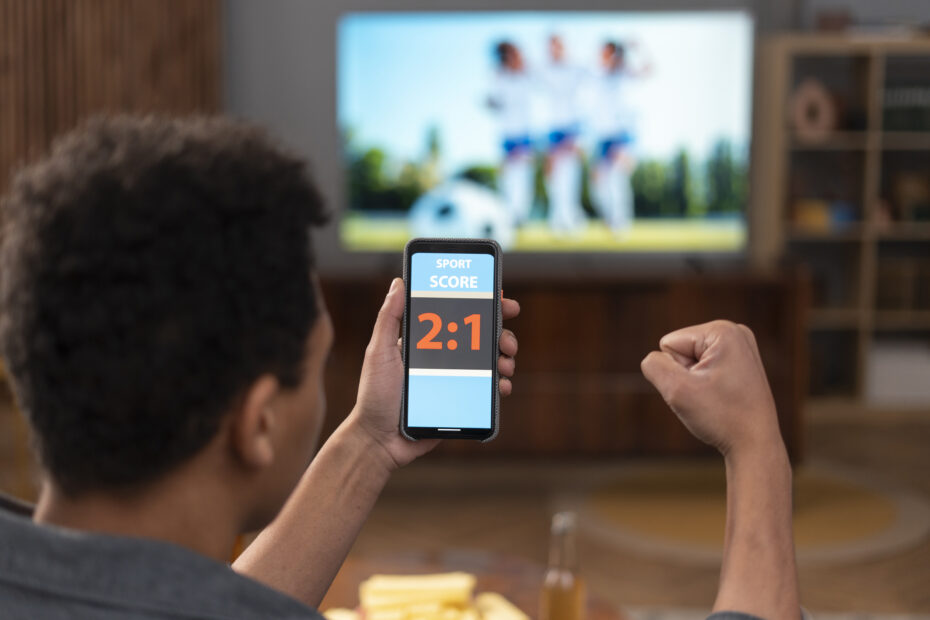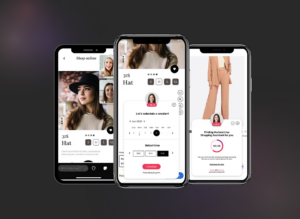Introduction:
Interactive ads on smart TVs have revolutionized the way brands engage with their audiences. Unlike traditional commercials, these ads offer viewers a dynamic and immersive experience that blurs the line between entertainment and advertising. By allowing users to interact with the content on their screens, interactive ads create a sense of participation and engagement that can significantly impact brand recall and purchase intent.
Imagine watching your favorite show and being able to seamlessly explore more about a product or service featured in an ad by simply clicking on your remote. This level of interactivity not only captures attention but also provides valuable insights to advertisers about consumer preferences. Additionally, interactive ads enable brands to tailor their messaging in real-time based on user interactions, making each advertisement feel personalized and relevant to the viewer’s interests. The power of interactive ads lies in their ability to transform passive viewers into active participants, fostering a deeper connection between brands and consumers through shared experiences.
Definition and importance of interactive ads
Interactive ads revolutionize traditional advertising by actively engaging viewers and sparking conversations. These dynamic advertisements allow for two-way communication, letting users participate in the ad experience through quizzes, games, or personalized content. By providing a more immersive and personalized experience, interactive ads create a stronger connection between brands and consumers. This increased engagement leads to higher click-through rates, longer viewing times, and better brand recall compared to static ads.
In today’s digital age where attention spans are dwindling, interactive ads offer a refreshing approach to capturing audience interest. By incorporating elements of gamification or customization, brands can captivate viewers and encourage them to interact with the content on a deeper level. This not only drives brand awareness but also builds brand loyalty as users feel more connected to the product or service being promoted. Ultimately, the importance of interactive ads lies in their ability to cut through the noise of traditional advertising and establish meaningful connections with consumers in an increasingly crowded marketplace.
Benefits of interactive ads on smart TV
Interactive ads on smart TVs offer a dynamic and engaging way for brands to connect with audiences. By incorporating interactive elements such as quizzes, polls, or games, advertisers can create a more immersive and personalized experience for viewers. This not only captures attention but also increases brand recall and engagement.
Moreover, interactive ads on smart TVs provide valuable data and insights to advertisers. Through user interactions with the ad content, brands can gather information on viewer preferences, behavior patterns, and demographic details. This data can then be used to optimize future marketing strategies and tailor campaigns to better suit target audiences.
Additionally, interactive ads on smart TVs allow for direct response capabilities, enabling viewers to make purchases or engage with the brand without leaving their living room. This seamless integration of advertising and action enhances the overall user experience while driving conversion rates for businesses.
How interactive ads engage viewers
Interactive ads have revolutionized the traditional advertising landscape by offering viewers a dynamic and engaging experience. By allowing users to actively participate in the ad content, these ads create a two-way communication channel that captivates audiences like never before. Whether it’s through quizzes, games, or personalized content, interactive ads provide viewers with a sense of control and agency over their viewing experience.
Engagement is key in the world of advertising, and interactive ads excel at keeping viewers hooked from start to finish. These ads prompt users to interact with the content, making them actively involved in the brand messaging process. Furthermore, interactive ads have proven to be more memorable and impactful compared to static advertisements, as they create an immersive experience that resonates with consumers on a deeper level. In an era where attention spans are shrinking, interactive ads offer a refreshing approach that demands active participation from viewers.
Examples of successful interactive ad campaigns
One successful interactive ad campaign that stands out is the Bud Light Button by Bud Light. This campaign allowed viewers to interact with their smart TVs to order Bud Light directly to their homes during major sporting events. By leveraging the convenience of smart TV technology, Bud Light effectively engaged customers and increased sales.
Another noteworthy example is the IKEA Place app by IKEA, which utilized augmented reality in interactive ads. This innovative campaign allowed users to virtually place furniture from IKEA’s catalogue into their own homes before making a purchase. This immersive experience not only enhanced customer engagement but also provided valuable insights into user preferences and behaviors for IKEA.
These examples highlight how interactive ads are revolutionizing traditional advertising methods and creating more personalized and engaging experiences for consumers. By incorporating interactive features on smart TVs, brands can connect with audiences on a deeper level and drive increased brand loyalty and sales.
Tips for creating effective interactive ads
When it comes to creating effective interactive ads for your smart TV audience, consider the power of personalization. Tailoring your ad content to match the preferences and behaviors of viewers can significantly boost engagement. Utilize data analytics and audience segmentation techniques to deliver targeted ads that resonate with specific demographics.
Another tip for crafting compelling interactive ads is to prioritize user experience. Make sure the interactive elements are intuitive, easy to navigate, and seamless to enhance viewer satisfaction. Incorporating gamification or allowing viewers to make choices within the ad can create a more engaging and immersive experience that drives higher levels of interaction and brand recall.
Lastly, don’t underestimate the importance of strong call-to-actions in your interactive ads. Encourage viewers to take a desired action such as clicking through to learn more, signing up for promotions, or making a purchase. Effective CTAs can drive conversions and help measure the success of your interactive ad campaign on smart TVs.
Future trends in interactive advertising on smart TVs
As we move forward into the digital age, interactive advertising on smart TVs is poised to revolutionize the way brands connect with consumers. One key trend that we can expect to see in the future is the integration of artificial intelligence and machine learning algorithms to deliver personalized and targeted ads. These technologies will enable advertisers to gather insights about viewers’ preferences and behavior, allowing for more relevant and engaging ad experiences.
Furthermore, augmented reality (AR) and virtual reality (VR) are anticipated to play a significant role in shaping the future of interactive advertising on smart TVs. Imagine being able to try on a pair of sunglasses or test drive a car from the comfort of your living room through immersive AR/VR ads. This level of engagement has the potential to create memorable experiences for viewers while driving higher conversion rates for advertisers. The convergence of these advanced technologies with interactive TV ads opens up a world of possibilities for both brands and consumers alike, setting the stage for an exciting era of advertising innovation.
Conclusion: Harness the power of interactive ads.
Furthermore, augmented reality (AR) and virtual reality (VR) are poised to revolutionize the world of interactive advertising by offering immersive experiences that blur the lines between physical and digital realms. Imagine being able to try on clothes virtually, test drive a car from the comfort of your living room, or even tour a vacation destination in stunning detail—all through the power of AR and VR technology. These innovative tools not only captivate audiences but also provide brands with new ways to engage consumers in meaningful and memorable ways.
As we move towards a future where traditional advertising methods are becoming increasingly stale, AR and VR offer a refreshing approach that allows for deeper connections between brands and their target audiences. By leveraging these cutting-edge technologies, advertisers can create personalized experiences that resonate with consumers on a more emotional level, ultimately driving brand loyalty and purchase intent. With AR and VR set to play an integral role in shaping the future of interactive advertising, it’s clear that embracing these advancements will be key for companies looking to stay ahead in today’s competitive landscape.
Read more:
From Screen to Shopping Cart: Interactive Ads and Shoppable Videos on CTV











